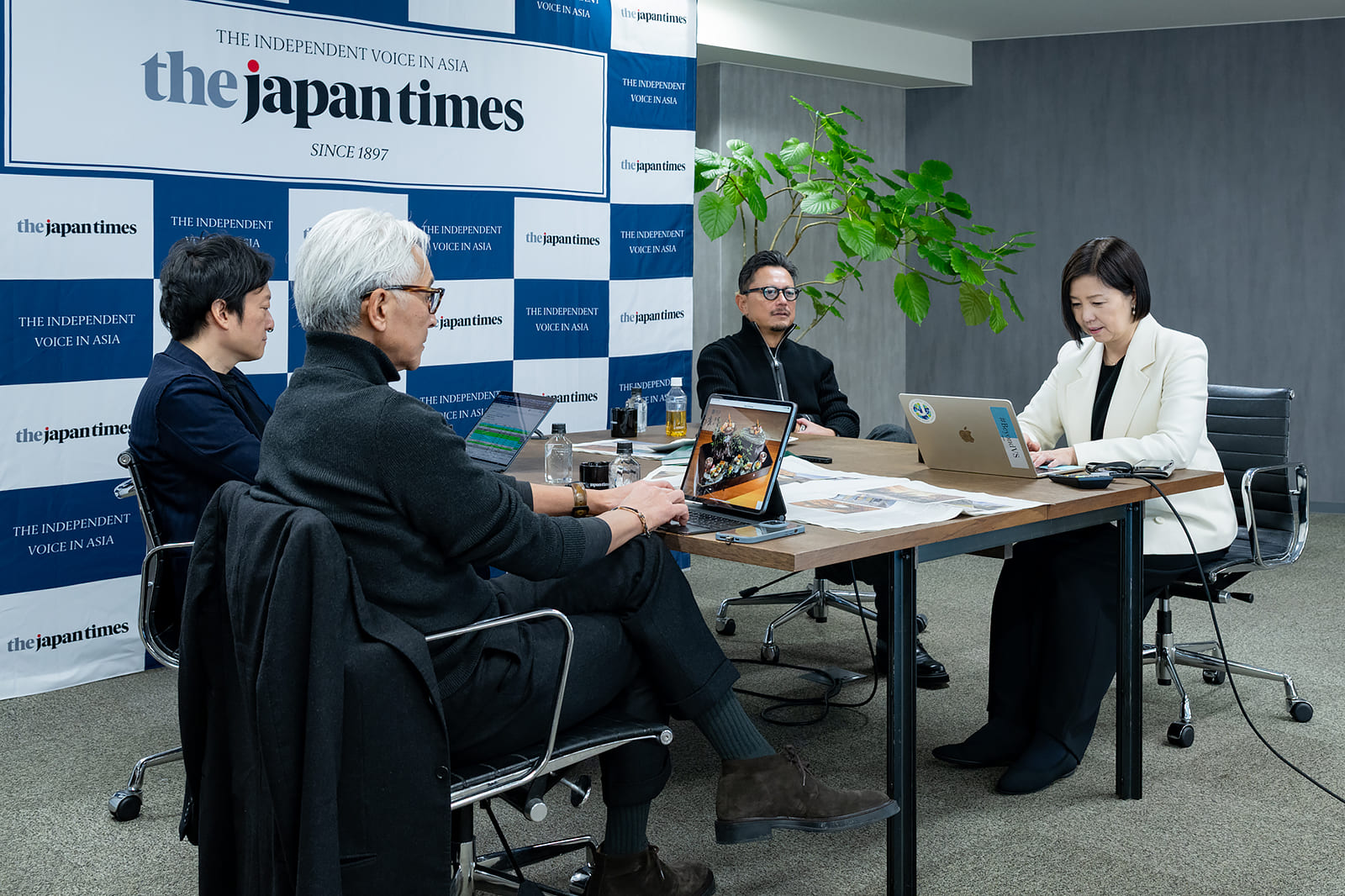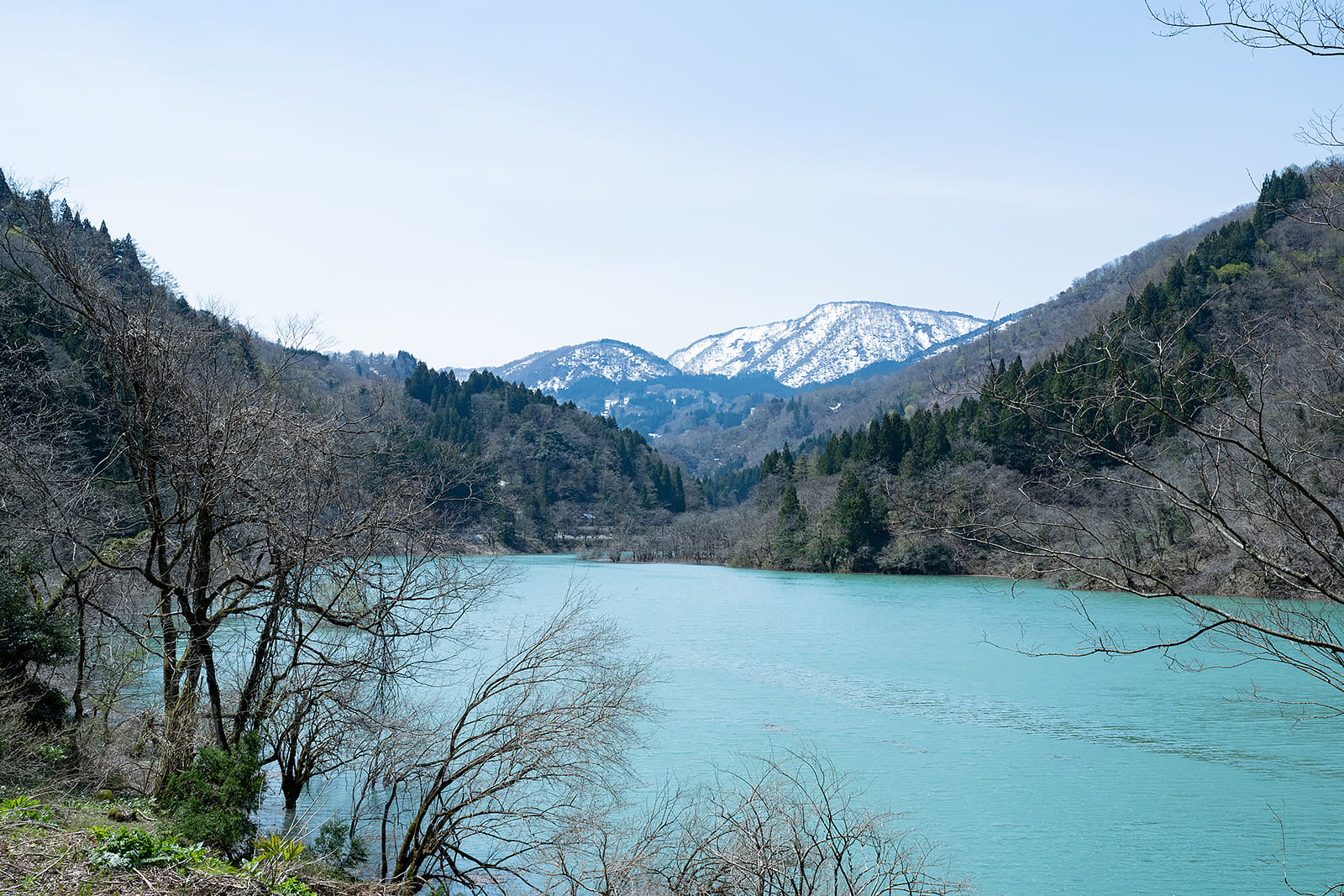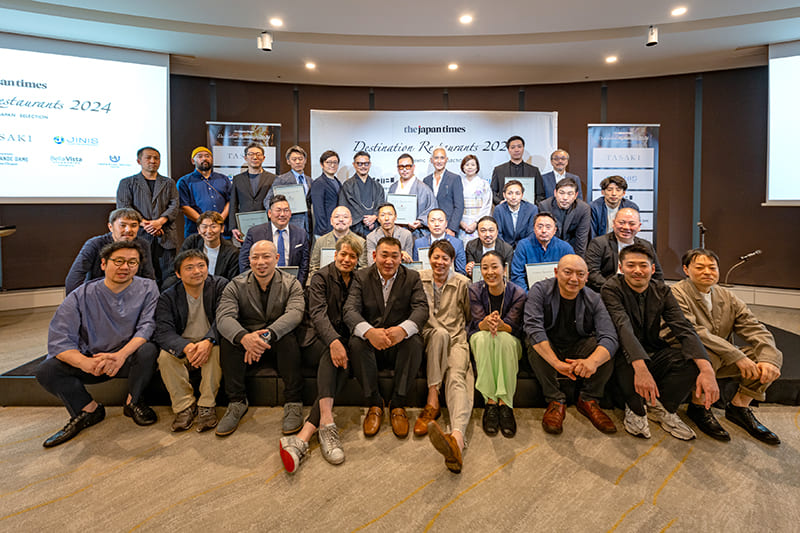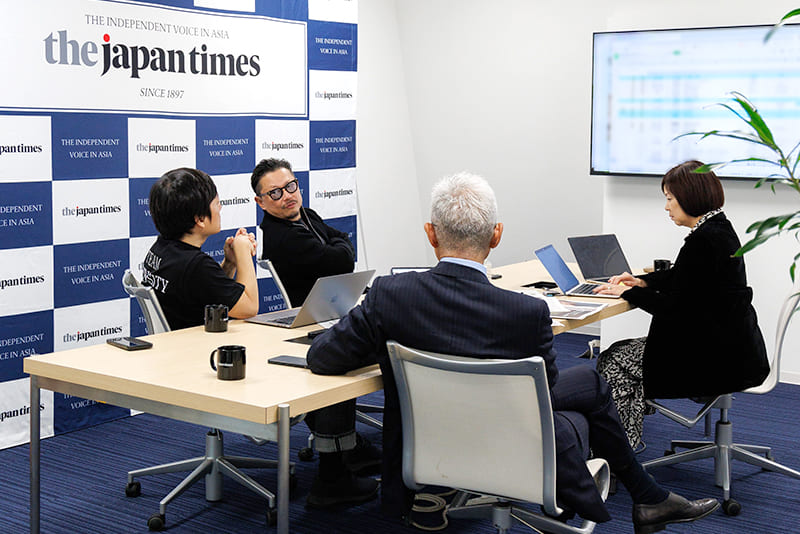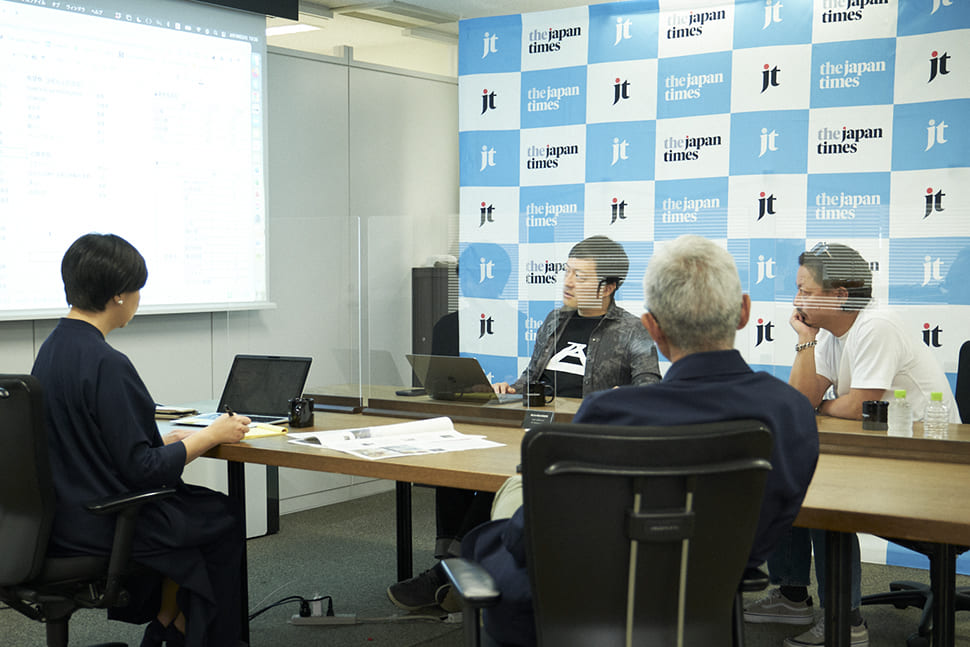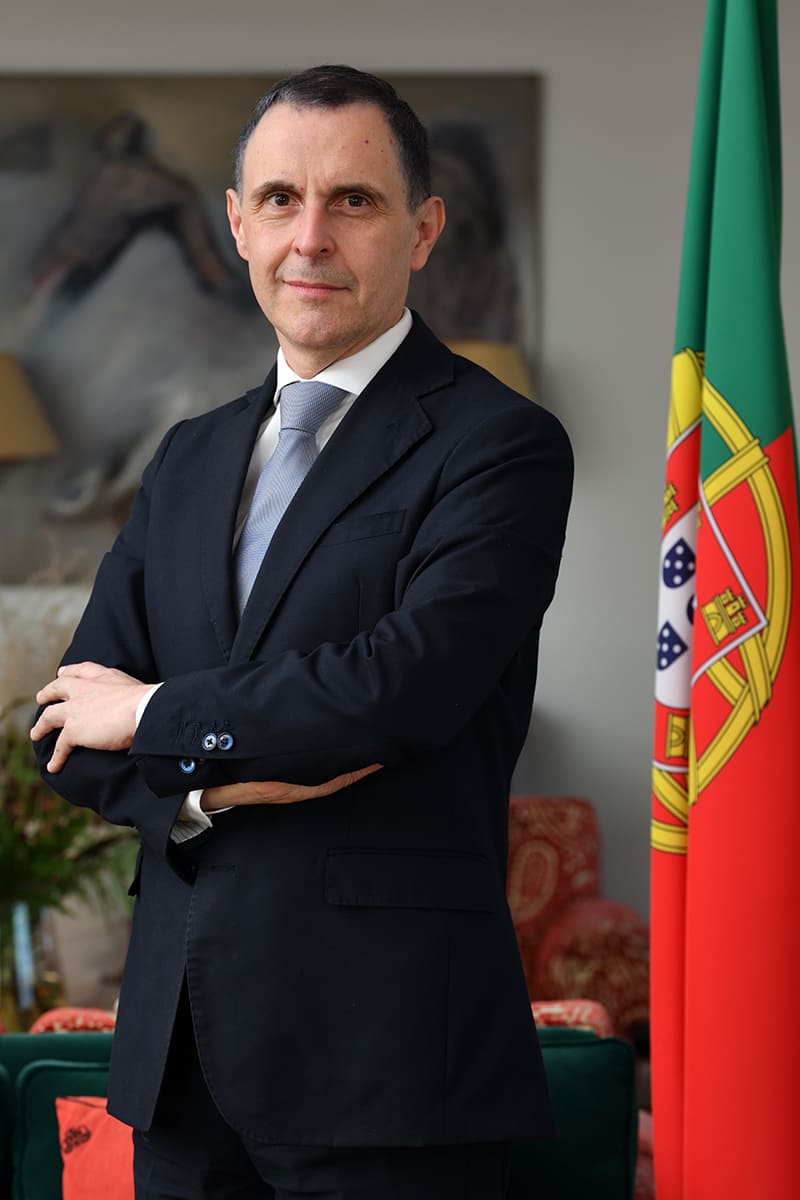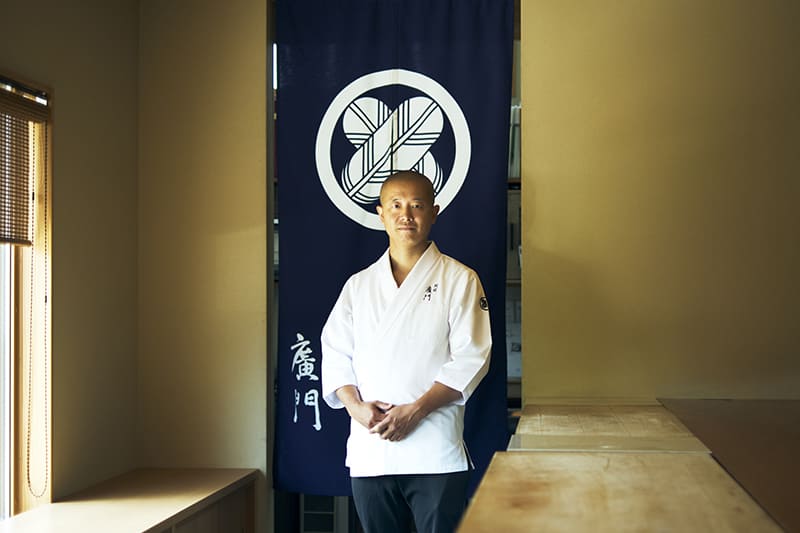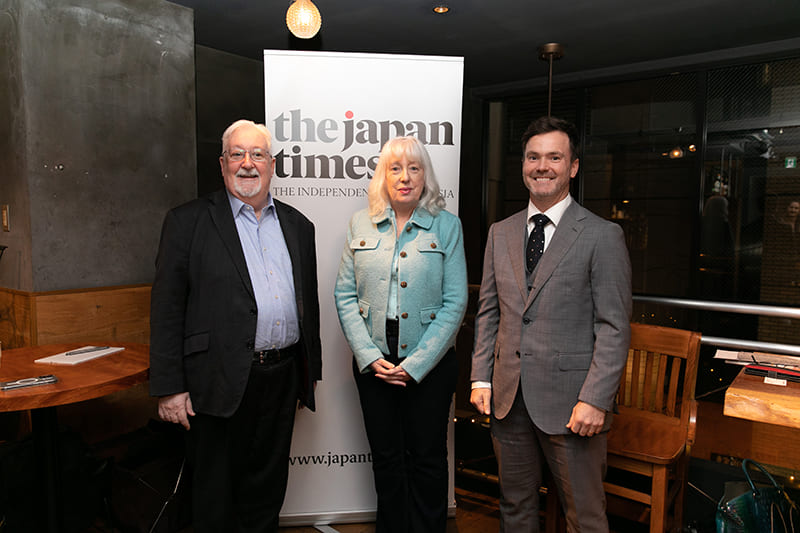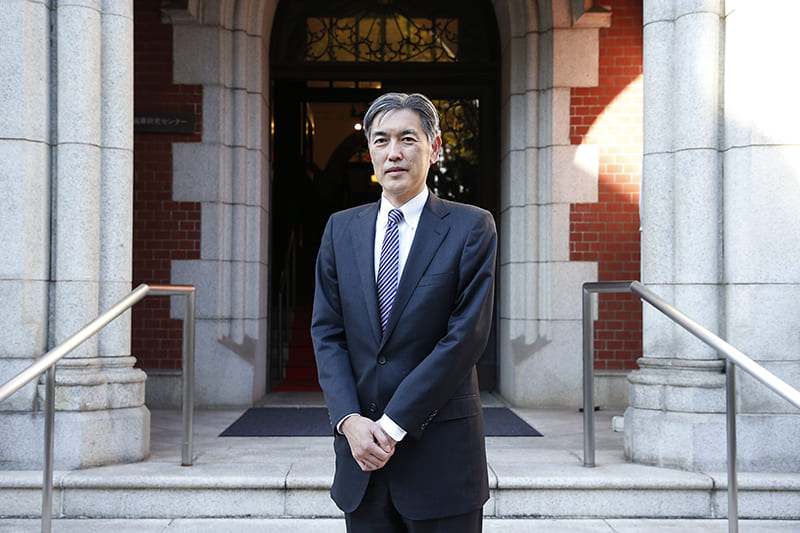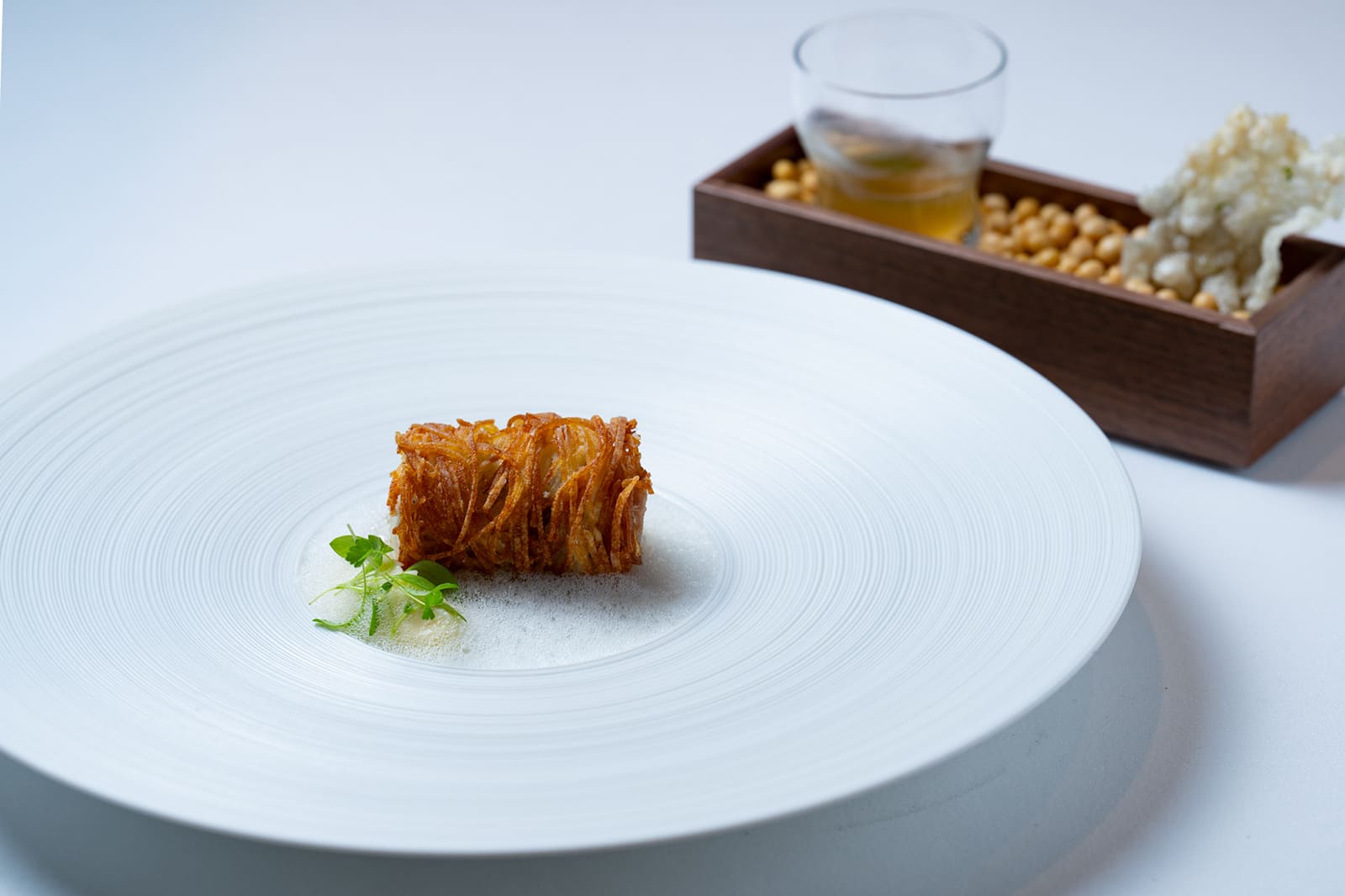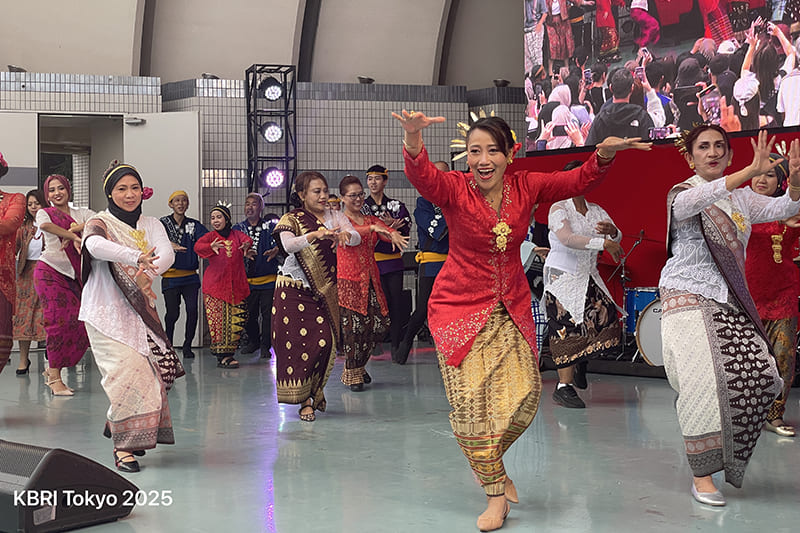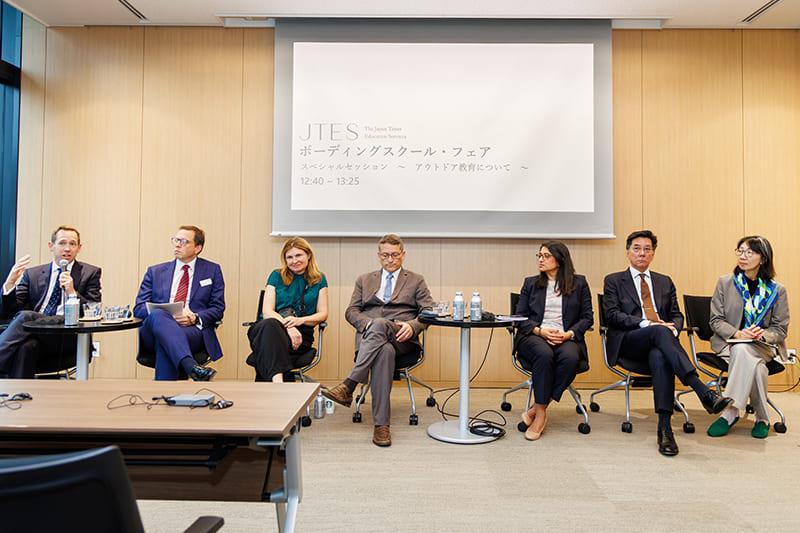July 25, 2025
Talking about the future of regional restaurants
The Destination Restaurants
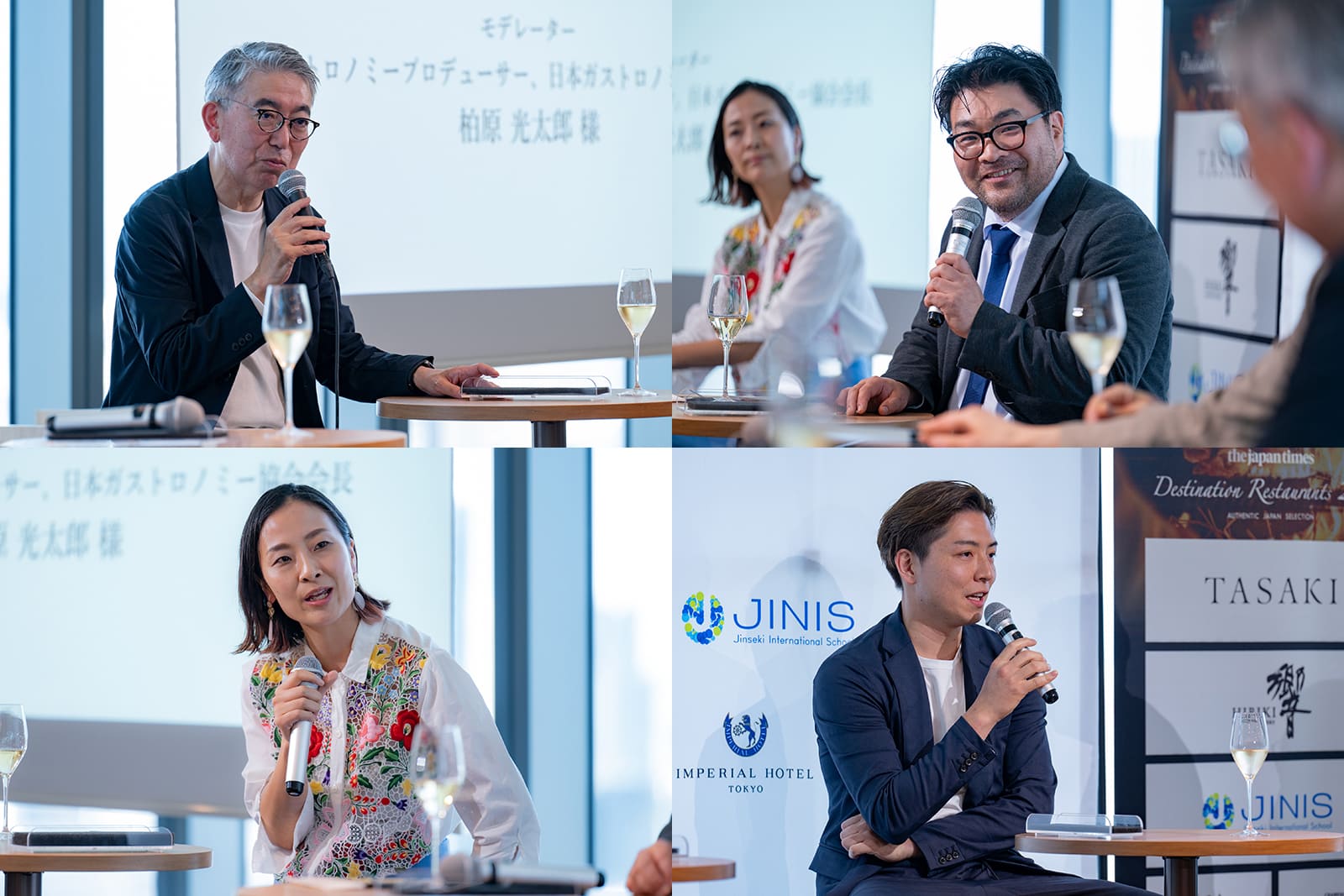
Bottom left: Satoyama Jujo chef Keiko Kuwakino. Bottom right: Auberge Eaufeu chef Shota Itoi.
The Destination Restaurants 2025 awards ceremony, hosted by The Japan Times, was held at the end of May in Tokyo’s Azabudai Hills. The 10 selected establishments are regional restaurants that serve as starting points for local revitalization through cuisine. Attending the event were chefs honored this year and in the four previous years of Destination Restaurants. After the ceremony, there was a talk session facilitated by gastronomy producer Kotaro Kashiwabara. Two of this year’s award-winning chefs, Shota Itoi from Auberge Eaufeu and Kenji Kawamura from Nonna Nietta, along with chef Keiko Kuwakino from Satoyama Jujo, who was honored by Destination Restaurants in 2022, took part in a discussion about the joys and challenges of running a regional restaurant.
Operating a regional restaurant would seem to have many upsides — the availability of region-specific ingredients, for example, and lower rents than in big cities — but what is it like in reality? Kuwakino, who each day harvests the bounties of the mountains and fields around the Niigata Prefecture city of Minamiuonuma, commented: “I don’t think specifically about using unusual ingredients. What’s important is how I use the things that are always there, like mountain vegetables. I feel that’s difficult in itself. In any case, nature doesn’t go according to plan. Recently it’s reported that fewer fish are being caught in the ocean and the types of fish caught in each season are changing, and the same is true for mountain vegetables. At this point, we can’t always gather the same plants in the same period each year. That’s one reason it’s difficult to convey the character of the land in the space of a year or two. All in all, it takes about 10 years.”
Itoi was born in Kyoto Prefecture and trained in Ashiya, in Hyogo Prefecture. In July 2022, he became the chef at Auberge Eaufeu in the Ishikawa Prefecture city of Komatsu, a place with which he had no previous connection.
“Adding value to ingredients is a chef’s work,” he said. “In that respect, I don’t think there’s any difference between large cities and regional areas. In my case, I was interested in the plan to use a former elementary school building to create an inn and support the economy, so I accepted the post of chef at Auberge Eaufeu. But, of course, it’s harder to attract customers [in that area] than in a big city. I also experience more difficulty in operating an inn with a restaurant than in running a restaurant only.”
In the restaurant industry, the shortage of labor has long been a major issue — and in regional areas, especially in the case of inns, finding and keeping workers is problematic in itself, and many business owners struggle with managing work times. In terms of attracting customers, it was mentioned that Ibaraki Prefecture, which had actually been regarded by many as “not meriting a special trip” because of its proximity to Tokyo, has recently become a focus of attention among “foodies.”
Kawamura, who runs the Italian restaurant Nonna Nietta in Tsukuba, Ibaraki Prefecture, said: “Ibaraki produces large quantities of vegetables, and it has the ocean, mountains and lakes. There are also branded products like pork from Meishan pigs. It’s a really abundant area. Many vegetables produced in Ibaraki are transported to Tokyo, but after just one day they’re completely different ingredients, so it’s worth making the trip to Ibaraki. Over the past few years, along with chefs I’ve been friendly with for a long time, we’ve been increasing awareness, for example through events that create excitement around Ibaraki. This has led to connections that go beyond the world of cuisine.”
The selection committee has also talked about the fact that collaboration among chefs in Toyama Prefecture is a strength of Himawari Shokudo 2, the Destination Restaurant of the Year 2025. Such collaborations among chefs, and between chefs and producers, have been gaining attention as keys to regional revitalization. Takanori Nakamura, a columnist and Japan chair of The World’s 50 Best Restaurants Academy, attended the awards ceremony. Asked for impromptu remarks, he made an appeal to guests, saying, “Everyone — not only chefs and producers, but those in media, government and more — let’s all work together to energize regional areas.” These words were met with a round of applause.
Facilitator Kashiwabara concluded the talk session with the comment, “Japan is embarking on an age when change will focus on regional areas. The Destination Restaurants award winners, whose numbers will increase to 60 next year and 70 the year after that, will surely be a driving force in this movement.”
地方レストランの強みと、その未来は?
ジャパンタイムズ主催の「Destination Restaurants 2025」授賞式が5月、東京・麻布台ヒルズで開催された。食を通じて街おこしの起点となる地方の10店が今年も選ばれ、表彰式後にトークセッションが開催された。進行役にガストロノミー・プロデューサー、柏原光太郎を迎え、2025年の受賞者から『オーベルジュ オーフ』糸井章太、『ノンナ・ニェッタ』川村憲二、2022年度の受賞者『里山十帖』桑木野恵子が登壇した。
「山菜も年々、同じ時期に同じものが採れなくなっています。そういったことも含めて1,2年で土地を表現するのは難しい」(桑木野)。「食材に付加価値を与えるのがシェフの仕事。その点に関しては都会でも地方でも同じ。地方は都会より集客は大変です」(糸井)。「首都圏に茨城産の野菜はたくさん出荷されていますが、1日経てば鮮度も違い別物になるので、わざわざ来てもらう価値があります」(川村)。
地方レストランの課題と魅力が大いに語られ多くのゲストがその意見に耳を傾けた。
Return to Sustainable Japan Magazine Vol. 50 article list page

